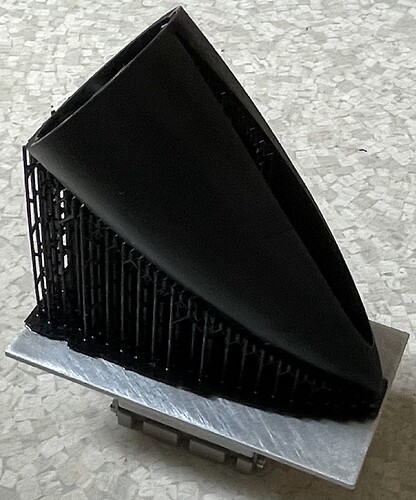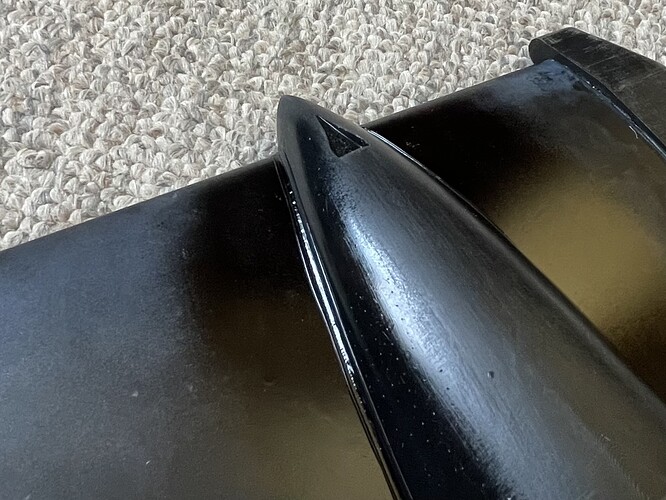Got it, thanks for the update. Since 30 amps is sufficient for my needs, I’m still fine with using this motor.
12awg seems to do on the foildrives but are really under the specs on current, motor current is normally up to 100-150A during starts, being sinewaves that’s 71-106A rms current.
Wires will heat up and steal some efficiency but the real problem is that being an inrunner the 65111 is too small to produce enough torque to reliably get up on foil. If you want a small motor then it’s better to pick an outrunner.
I agree with you. The wires are working under great overload.
Just printed a new nose cone with super tough resin because my old one bit the dust after a gnarly crash! And it’s in a stunning black color! I slammed into some rocks at high speed and got launched off my board like a stunt double. The carbon foil wing took a serious hit, but to my surprise, the board survived! (Perks of an inflatable, I guess ![]() )
)
A bit bummed about the wing not being pristine anymore, but now I can toss it on the sand without a care about scratches! ![]()
Always study the depth chart carefully before you efoil, my friends. Shallow spots can sneak up on you in unexpected places, and it’s seriously dangerous! Stay safe out there!
I recently noticed that when I foil at higher altitudes, air gets sucked into the mast and reaches the propeller, reducing thrust. It’s called the Anti-Breach System.
To fix this, I used a hot glue gun to seal the nose cone, and now there’s no more air affecting the propeller:
After improvement:
Hello Pavel,
how is your cone fixed? I can not see any screw,is it only glued?
How thick is this sheet you used? 6mm?
Hi Sharrow,
The nose cone is securely attached due to its design. Its shape allows it to be tightly fitted onto the mast, where it expands and compresses to stay in place. Additionally, it has internal grooves that align with the engine bolts, providing extra support and stability in the vertical direction.
3mm͏͏͏͏͏
I don’t recommend anyone to buy a FSESC 75100 that doesn’t have an aluminum PCB! It works very poorly. It overheats in a few seconds and greatly reduces the output power!
Something doesn’t add up here.
You say you have a 60v 32ah battery, that’s about 2kWh of energy (60x32).
Now you claim you rode for 2 hours 45 minutes and only used 60% of the battery charge. That means average consumption: 2000wh*60%/2.75h = 400w. How can that be?
Based on my measurements, the average consumption is approximately 1000 watts. This indicates that I powered the efoil for just 40% of the 2.75 hours, equating to roughly 1.1 hours of continuous riding.
Lucky you were to get the battery at that price.
The price list is more around 1500€
Hello, comrades! Today I tried putting a washer under the rear wing to make it closer to zero angle. The result is amazing! The board slides more easily, there’s no need to stand forward, now I can stand further back, and the battery is used more efficiently. I hardly press the trigger.



